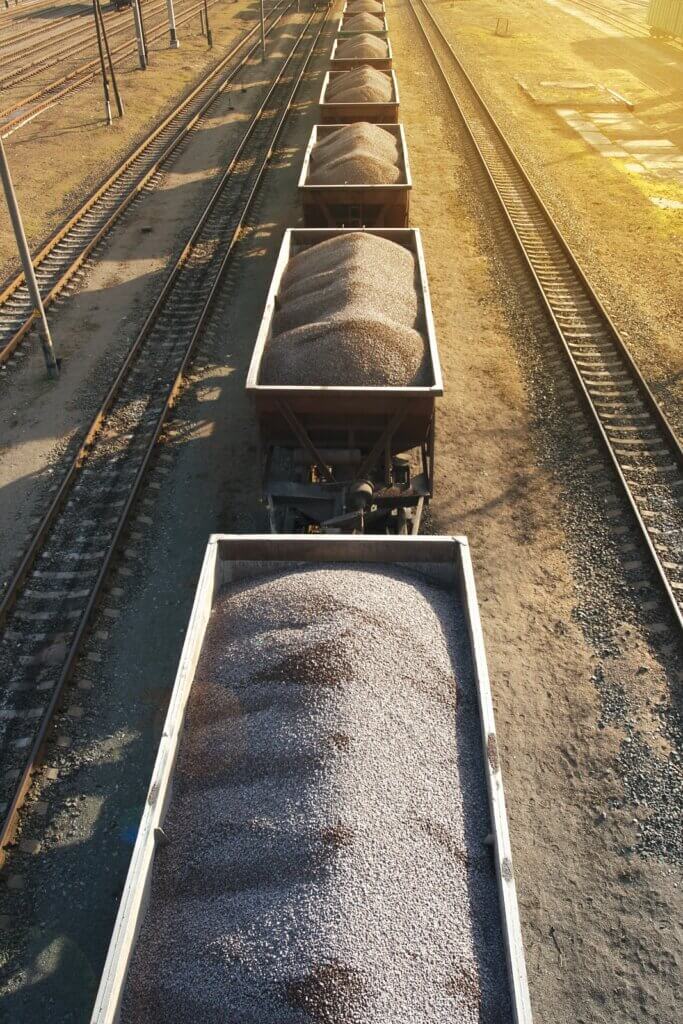
Railway Scale: What types and how to choose
The scenario for the use of the railway network in Brazil has changed in recent years. A fact that marks this change is the announcement by the Ministry of Infrastructure of an investment of U$ 6 billion to expand this structure. Within this investment, obviously, a part of the resources would be used to implement a greater number of railway scales.
This equipment is extremely important when we talk about the transport of large loads, because without a precise check of the weight of the cars, possible accidents and other problems with the train structure can occur. In addition, railway scales prove that the exact order quantity is being transported, avoiding problems with customers who purchased the cargo.
Therefore, the question arises: what types are there and how to choose the best railway scale to implement within your industry? To eliminate any uncertainty that may exist on this subject, we have separated for you the main models that exist and the best way for you to choose.
Content Index
Railway scale types
The importance of having an extensive and quality railway network in Brazil became even greater after the truckers' strike in 2018, where the country collapsed with the pause in road transport. This situation can be better understood by the Dom Cabral Foundation survey, also from 2018, which revealed that the road network is responsible for the flow of 75% of production in the country, leaving only 5.4% for the railways.
With this scenario, as already mentioned, greater investment in railroads was sought, also increasing the need for the use of railway scales. With that, the time has come to get to know the main models of railway scales that exist in the market. See below:
Static Scale

The name of this scale already tells a lot about its operation. Thus, understand that when you have a static scale, you can only weigh trains and any other road assets when they are stopped. That is, when they are completely static on the weighing rails.
Thus, in this form of weighing, the final value is obtained through the difference in gross weight presented by the wagon plus the load contained in it at the moment, versus the tare weight. With a static scale it is only possible to weigh one wagon at a time, having to move the train forward or backward and stop it again to perform a new weight calculation.
So, as you can imagine, it takes much more time to weigh all the wagons on a train, which ends up affecting the dynamics and optimization of the entire flow process. In addition to this fact, there is also a greater energy expenditure to move the train, since it will be necessary to constantly do the “move and stop” process and more labor is needed to carry out the weighing.
Even with these setbacks that delay and, consequently, make transportation more expensive, the choice for some model of static scale should also be guided by the presence of an approval with INMETRO on the product. This type of scale presents an excellent weighing accuracy, when done correctly, with a stationary and disengaged wagon. The choice of this model is also due when there is some particularity in the yard layout, it is a small one or have some other restrictions for dynamic weighing.
In Motion Rail Scale

Considered more modern equipment, in motion rail scale have a working model that helps to increase the flow of the load. This is because in this case, the wagons are weighed with the railway assets in motion, within a speed pre-determined by each manufacturer.
In Motion Rail Scales normally have three construction modes, with the use of instrumented tracks, where the track itself is the sensor element (load cell), instrumented sleepers when the sleepers are the sensor elements and there are also portable BFDs where the sensors are attached to the rails and can be easily removed. The three measurement principles require a modern and efficient computing system, since weighing is always done by axle and the operating software is responsible for assembling the weights of wagons, locomotives and the train weight totalizer.
This can be considered an extremely valuable resource in a market that increasingly demands a better use of available time. In addition, weighing in motion is essential when considering a flow of wagons above 50 a day.
To exemplify this operational gain, imagine that the speed allowed for weighing to occur is 10 km/h. In this scenario, one can think of weighing something around 100 wagons in 10 minutes of operation of an in Motion Rail Scale. Even when there is a need to disengage the wagons, this equipment also generates more benefits when compared to a static scale.
In order to guarantee the maximum possible weighing accuracy, the quality of the tracks, sleepers and ballast of the existing track must be observed, as well as the possibility of building a solid concrete slab to receive the scale to meet the weighing needs.
Technology on the rails

The functioning of the In Motion Rail Scale has the presence of digital load cells, which are present in each weighing track, where it is possible to calculate both each axle of the wagon and it as a whole. Being directly connected with an online system, these cells transmit the information to a control room where the operator receives and indicates the data.
This allows the identification of possible accident risks and also offers the opportunity to reduce the expenses with the maintenance of trains and tracks, generating a decrease in expenses. Therefore, this is yet another proof of how technology can positively affect the transport industry.
In Motion Rail Scale x Static scales

For you to better understand the difference between In Motion Rail Scale and static scales, see below a comparative table between the two:
| Dynamic Scale | Static Scale | |
| Weighing speed | 0 km/h | Até 50 km/h |
| Operating labor expense | lower | upper |
| Load flow agility | upper | lower |
| Equipment accuracy | Maximum 0.1% accuracy for the total weight of the composition | High precision with models close to 0.02% |
| Ease of maintenance | Medium | upper |
| Installation | For more accurate model (class OIML 02) rigid concrete platform is required, for the other classes 0.5, 1.0 and 2.0, it can be installed directly on the crushed stone ballast. | Civil work is required for installation in all cases. |
Conclusion
Throughout the article it is possible to realize that in the need for a railway scale today it is more recommended to rely on In Motion Rail Scales instead of static, as this equipment has a technology that helps to optimize processes within an industry. Click here and know more.












